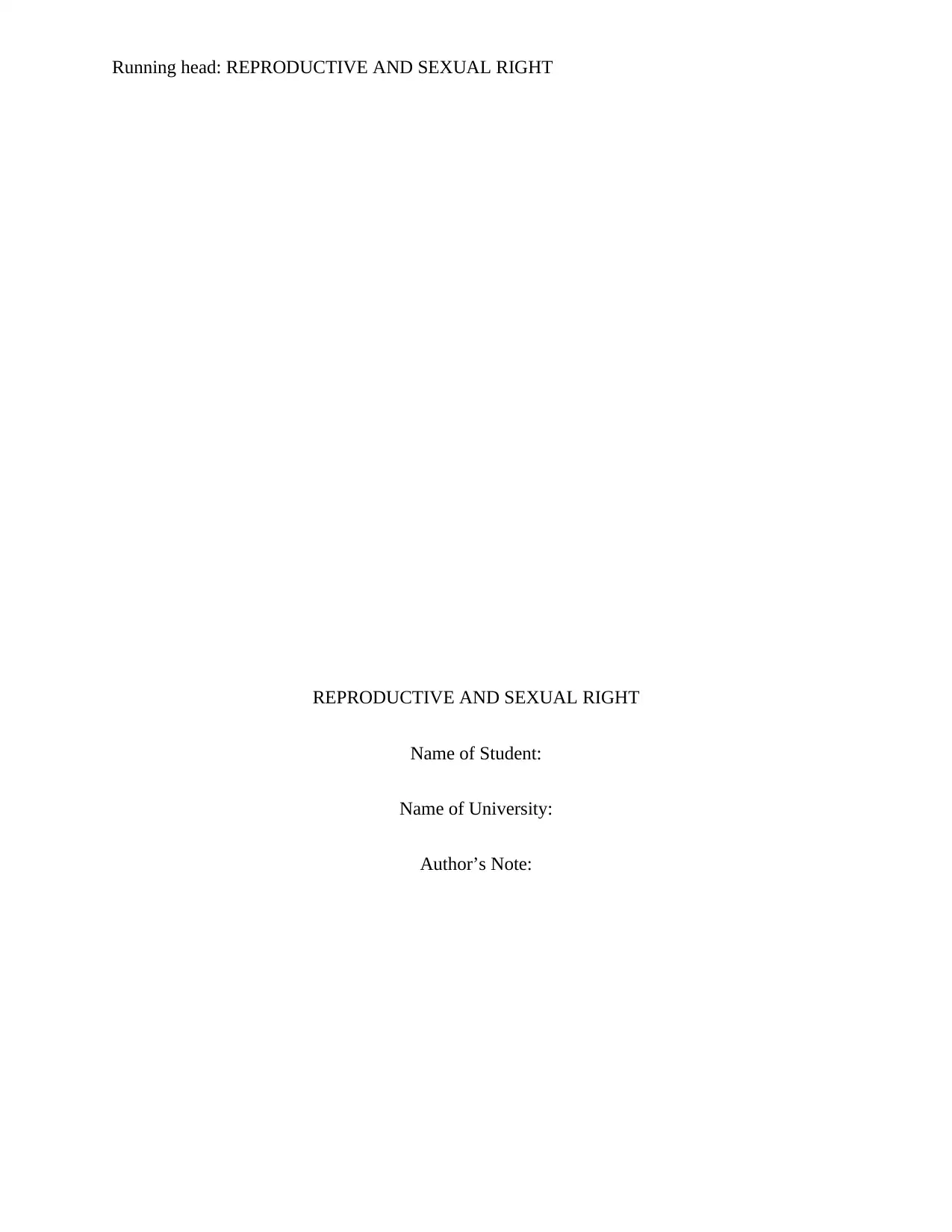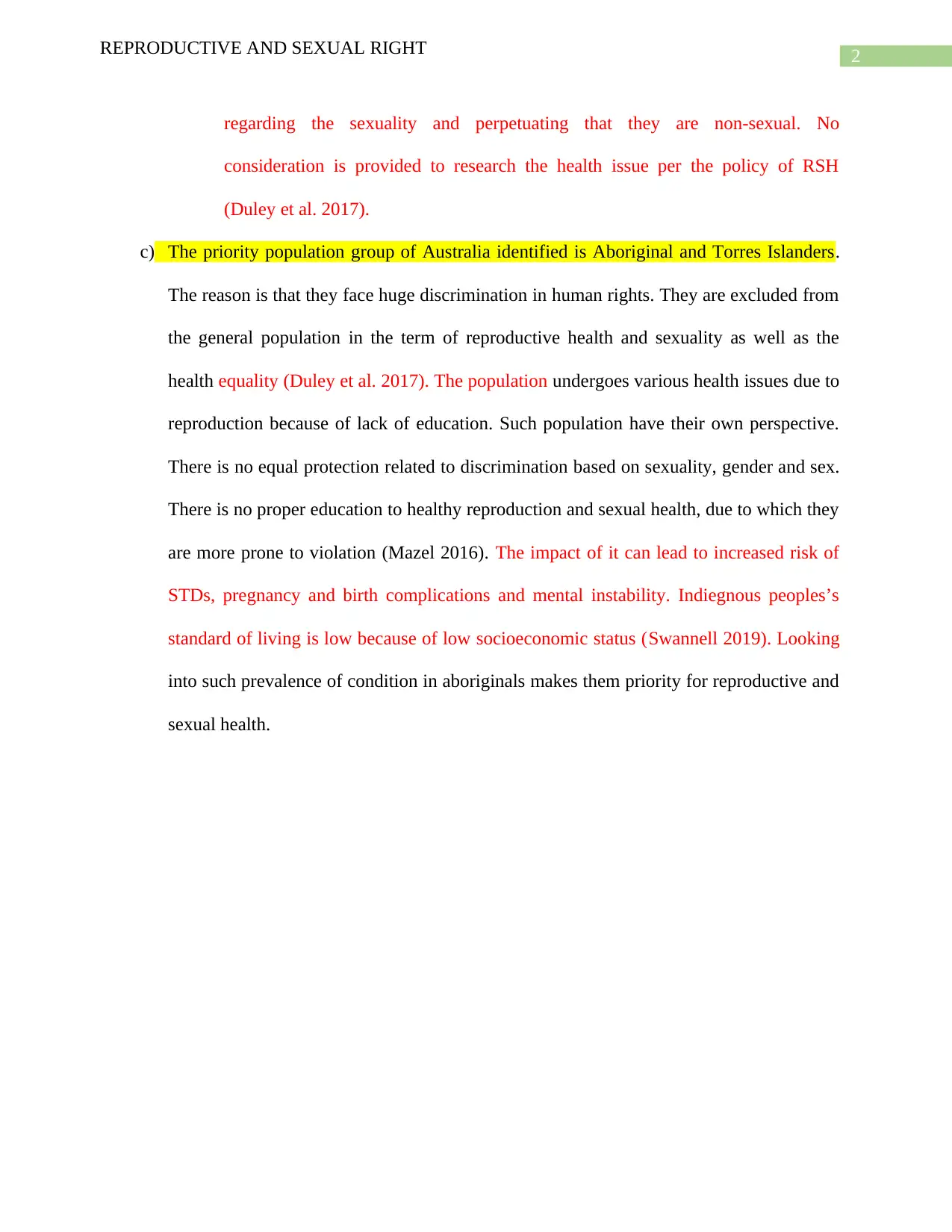Analysis of Reproductive and Sexual Rights in Australia: A Case Study
VerifiedAdded on 2022/10/06
|4
|801
|156
Essay
AI Summary
This essay explores the sensitive area of reproductive and sexual rights (RSH) in Australia, highlighting the influence of cultural and social standards. It discusses how laws protect individuals' rights to make decisions about family planning, while also acknowledging the impact of socioeconomic factors on access to these rights. The essay provides examples of how RSH are upheld in Australia, such as pregnancy-based discrimination protections and gender equality initiatives. It also addresses restrictions and disparities faced by certain groups, like women with disabilities and indigenous populations, particularly the Aboriginal and Torres Strait Islander communities. The essay emphasizes the health issues, discrimination, and lack of education related to healthy reproduction and sexual health faced by these priority groups, which can lead to various health complications. It references relevant policies and research to support the analysis, underscoring the need for equal protection and improved access to reproductive and sexual health resources.
1 out of 4











![[object Object]](/_next/static/media/star-bottom.7253800d.svg)